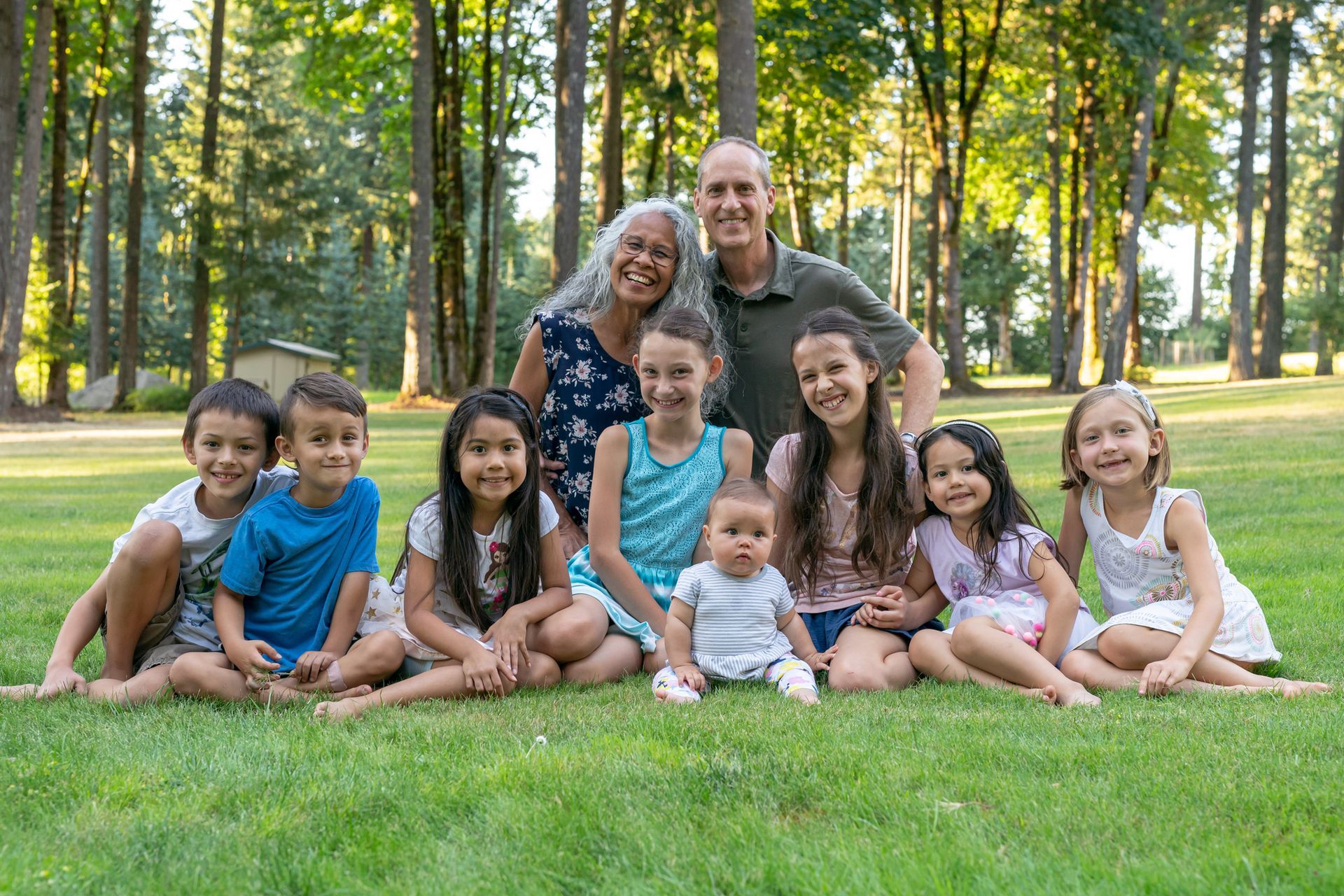Top Strategies for an Effective Planning Retreat: Your Comprehensive Guide
How can you ensure a successful planning retreat for your organization? This guide simplifies the process, covering essential steps from defining objectives to selecting an ideal venue. By the end of this article, you’ll have the strategies and tips needed to make your planning retreat productive and impactful.
Key Takeaways
- Clarify and define retreat goals upfront to ensure alignment and measurable outcomes.
- Select the right venue that fosters creativity and comfort, enhancing participant engagement.
- Gather feedback post-retreat to continuously improve and ensure greater success in future planning.
Understanding the Purpose of a Planning Retreat
The essence of an annual retreat extends beyond mere relaxation. It’s an opportunity for organizations to step back and view their operations with fresh perspectives, speeding up the strategic planning process and engaging in meaningful discussions. A well-executed retreat allows participants to escape daily demands and focus on personal growth and development.
Board retreats, for instance, serve multiple objectives, including inspiring sessions, spiritual moments, and opportunities for reflection. The purpose of a nonprofit strategic planning retreat is to align organizational priorities for future growth. Retreats nurture better relationships among board and staff, aiding in contemplating the organization’s direction and setting priorities for the next three to five years.
The retreat offers a chance to explore personal development in a setting conducive to relaxation and rejuvenation. Most retreats guide organizations in defining their vision and mission, ensuring they reflect the daily work done to achieve the organization’s goals. Focusing retreats on these aspects can significantly enhance the overall experience and outcomes.
Defining Your Retreat Goals
Establishing clear retreat goals at the outset of planning is crucial for ensuring all activities are aligned with the retreat’s purpose. These goals inform all other decisions needed to make the retreat effective and help in evaluating its success post-event. Specific, measurable objectives allow participants to gain new perspectives and a refined concept of their purpose, enhancing the overall retreat experience.
Creating a purpose statement can lead to discussions about the current state of the nonprofit and its future goals. Evaluating the mission statement during the retreat ensures it reflects the work that participants do daily to achieve the vision.
Scheduled downtime is also essential for participants to process experiences and engage in informal discussions, which can lead to deeper insights and connections.
Identifying Key Outcomes
Identifying the key outcomes of the retreat is one of the critical steps in the planning process. Desired outcomes may include actionable strategies, improved team alignment, and clear project plans. Incorporating collaborative exercises and team-building activities can significantly enhance trust and rapport among participants, breaking down communication barriers and fostering a cooperative environment.
Organizations often utilize retreats to realign their strategic objectives and priorities. Incorporating lessons learned from feedback into regular practices can lead to sustained improvements in team dynamics, ensuring that the positive impacts of the next retreat extend well beyond its duration.
Choosing the Right Location and Venue

Choosing the right location and venue is a pivotal element in the success of a planning retreat. The setting plays a crucial role in influencing the overall comfort, relaxation, and connection among participants. A location that fosters a positive atmosphere can lead to enhanced creativity and engagement during the retreat. Therefore, it’s essential to select a venue that aligns with the retreat’s theme and objectives, supporting participants’ need for relaxation, rejuvenation, and connection.
Both the location and the facilities should be conducive to the retreat’s goals, offering comfortable accommodations and spaces that encourage reflection and collaboration. Whether it’s a historic lakeside setting like Geneva Point Center or a rustic mountain lodge, the right venue can make all the difference in creating a memorable and productive retreat experience.
Scenic and Inspiring Locations
Selecting a picturesque and inspiring location is essential for fostering creativity and idea-sharing among retreat participants. A beautiful, natural environment can stimulate inspiration and motivate participants, making the retreat experience more enjoyable and productive. Knowing your target audience is crucial in choosing a location that aligns with their desires and expectations, ensuring the venue inspires and engages everyone involved.
Geneva Point Center’s scenic lakeside setting offers a perfect backdrop for hosting retreats, with nearly one mile of shoreline providing ample opportunities for reflection and relaxation. The historic charm and natural beauty of such venues can significantly enhance the creative atmosphere, making it easier for participants to disconnect from daily stresses and focus on strategic planning and personal growth.
Accommodation Options
Providing a variety of lodging options is essential to cater to different preferences and group sizes during retreats. From rustic cabins to luxurious private rooms, the right accommodations can enhance comfort and foster a sense of community among retreat attendees. Offering diverse lodging choices ensures that all participants feel comfortable and well-rested, ready to engage fully in the retreat activities.
For those looking for a unique and budget-friendly experience, tent camping is often available and can add an adventurous element to the retreat. Whether it’s a private lodge by the lake or a family cottage, providing various accommodation options can make the retreat more inclusive and enjoyable for everyone involved.
Crafting a Balanced Itinerary

A well-crafted itinerary is the backbone of an effective planning retreat. It should harmonize periods of work with time for relaxation, ensuring participants remain engaged and rejuvenated throughout the retreat. Including a balance of relaxation, learning, and meaningful activities in the itinerary is crucial for a successful retreat experience.
Engaging activities and rest should be allowed in the schedule to ensure participants feel refreshed and motivated. A compelling retreat’s theme can enhance participant engagement and focus during discussions. Effective retreat content should be a collaborative effort among participants, aligning with the organization’s mission and allowing for active participation to engage attendees.
Scheduling Strategic Planning Sessions
Scheduling strategic planning sessions is a key element of the retreat itinerary. Setting clear goals and intentions at the outset helps ensure that workshop sessions are focused and productive. The first session should solidify the mission, vision, and values, creating a foundation for effective planning. By the end of the retreat, participants should have developed the pillars and objectives of the strategic plan.
Utilizing brainstorming methods like the Eisenhower matrix can help categorize and prioritize ideas effectively. Natural settings, such as lakes, mountains, or forests, can invigorate discussions and inspire innovative thinking, making the strategic planning process more dynamic and engaging.
Incorporating Team Building Activities
Incorporating team building exercises into the retreat itinerary can significantly enhance collaboration and strengthen relationships among participants. Choosing facilities that offer recreational activities alongside accommodations can enhance team bonding and create a more enjoyable retreat experience. Small group discussions in workshops can further enhance collaboration and communication among participants.
Teams should strategically prioritize outcomes to ensure effective follow-up and implementation after the retreat. Observing team performance after a retreat can provide indicators of its success, including enhanced collaboration and communication, which are essential for achieving long-term goals.
Allowing Downtime for Reflection
Allowing downtime for reflection is a crucial aspect of retreat planning. Locations surrounded by nature can significantly reduce stress and enhance participants’ focus, making it easier for them to engage in deep reflection. Providing organized travel options helps participants arrive stress-free and ready to engage fully in the retreat activities.
Scheduling downtime is essential for personal reflection and helps participants rejuvenate. Downtime promotes informal interactions, allowing participants to build relationships and share insights in a relaxed setting.
This balance of structured activities and free time can lead to more meaningful and impactful retreat experiences.
Engaging Content and Facilitation

Engaging content and effective facilitation are critical to the success of a planning retreat. Including activities that foster participant involvement ensures that everyone remains engaged and motivated throughout the retreat. Engaging content should connect with participants and meet the retreat goals, making the experience both enjoyable and productive.
A well-balanced combination of engaging activities and time for rest can create a successful retreat experience. The role of a good outside facilitator is to guide discussions, maintain focus, and foster an inclusive environment where all voices are heard and valued.
Developing Relevant Workshops
Developing relevant workshops is essential for creating a meaningful retreat experience. Workshops should be designed to include diverse perspectives and experiences, enhancing their relevance for all participants. Activities such as scavenger hunts can encourage teamwork, communication, and leadership among participants.
Participants should engage in brainstorming methods like the Eisenhower matrix to prioritize ideas effectively. These workshops should be aligned with the organization’s mission and allow for active participation, ensuring that the retreat content is both engaging and productive.
Hiring an Experienced Facilitator
Hiring an experienced facilitator can significantly enhance the effectiveness of a planning retreat. A skilled facilitator’s role includes guiding discussions, maintaining focus, and fostering an inclusive environment for all voices to be heard. Choosing a facilitator with a proven understanding of nonprofit dynamics can further enhance the retreat’s effectiveness.
A good facilitator should have a strong ability to listen and synthesize ideas, ensuring that the retreat discussions are productive and aligned with the retreat goals. This helps in creating a more engaging and impactful retreat experience for all participants.
Managing Logistics and Budget
Managing logistics and budget is crucial for the success and sustainability of any retreat. It’s essential to have a clear understanding of costs associated with the venue, food, and materials when planning a retreat. Proper budget management helps to ensure that the retreat is financially sustainable and meets the objectives of the participants.
Ensure that all associated costs are accounted for before finalizing the budget to avoid unexpected expenses. Managing logistics effectively, including transportation and accommodations, is key to creating a seamless and enjoyable retreat experience for all participants.
Transportation and Travel Arrangements
Organizing transportation for a retreat aims to make the experience seamless and hassle-free. Effective transportation logistics allow participants to focus on the retreat’s essence, ensuring they arrive stress-free and ready to engage. Utilizing a retreat booking system simplifies transportation reservations, allowing date selection and secure payments.
When budgeting for transportation, consider factors such as accommodations, meals, activities, and facilitators to ensure all costs are covered. This helps in creating a well-organized and enjoyable retreat experience for all participants.
Setting a Realistic Budget
Setting a realistic budget is crucial as it directly impacts the overall success and enjoyment of the retreat experience. Start by determining the total amount available for the retreat, factoring in both fixed and variable costs. Various lodging options, such as campgrounds and cabins, can cater to different group preferences and budgets.
Finalizing a budget should involve considering the value of experiences provided in relation to costs incurred, ensuring participants gain maximum benefit. This helps in creating a financial sustainability retreat that meets the objectives of all participants.
Marketing and Promoting Your Retreat

Marketing and promoting your retreat effectively is essential for attracting the right participants and maximizing engagement. Utilizing social media and email marketing can significantly elevate your retreat’s visibility and attract your target audience. Partnering with other nonprofits can expand your reach and enhance the credibility of your retreat, tapping into existing networks. Leveraging multiple marketing channels and partnerships ensures high participation and a successful retreat experience.
Efficient marketing strategies can make your retreat stand out and draw in participants who will benefit the most from the experience. Focusing on the retreat’s theme and unique offerings helps create compelling promotional content that resonates with potential attendees.
Utilizing Social Media and Email Marketing
Honing in on your target audience and understanding what will speak to them is crucial for successful promotion. Use social media and email marketing as key channels for promoting the retreat. Incorporate engaging visuals and stories in social media posts to capture attention and drive interest. Visual content is particularly effective for increasing engagement and shares on social media platforms.
Segmented email lists allow for tailored messaging that resonates more with different audience groups, increasing relevance and response rates. Personalized and targeted marketing campaigns effectively reach and engage potential participants.
Partnering with Other Nonprofits
Collaborating with nonprofits that share similar values can amplify outreach efforts and lend credibility to your retreat. Partnering with other nonprofits can enhance the credibility of the retreat and attract a wider audience. Collaborative events with like-minded organizations can increase exposure and attract a broader audience.
Create referral programs with partnered organizations to encourage them to promote the retreat. These partnerships can help you reach new audiences and build a stronger community around your retreat.
Gathering Feedback and Evaluating Success
Gathering feedback and evaluating the success of your retreat is essential for enhancing future retreat experiences. Collecting participant feedback helps identify strengths and areas needing enhancement. Utilizing surveys to capture participant opinions is an effective method for assessing the success of a retreat.
Gather feedback from participants to gain insights into their experience and to implement improvements for future retreats. This process ensures that each retreat builds on the success of the previous one, continually enhancing the participant experience.
Using Feedback Forms
Utilizing participant feedback helps identify strengths and areas needing enhancement for future retreats. Feedback forms can be customized to assess various aspects of the retreat experience. Crafting targeted questions in feedback forms enables a better understanding of participant satisfaction and retreat impact.
Mobile-friendly feedback forms help increase participant response rates, making it easier for attendees to provide their insights. This feedback is invaluable for continually improving the quality and effectiveness of your retreats.
Implementing Improvements
After the retreat, take strategic plan pillars and objectives back to stakeholders for their feedback to ensure alignment and support. It is essential to create key results to track and measure progress on the strategic plan developed during the retreat. Collecting feedback from participants is crucial to determine the effectiveness of the retreat and areas for improvement.
Engaging stakeholders in the feedback process fosters collaboration and strengthens the commitment towards the strategic plan. Implementing these improvements ensures that each retreat is more successful and impactful than the last.
Summary
In summary, hosting a successful planning retreat involves understanding its purpose, defining clear goals, selecting the right location, crafting a balanced itinerary, engaging content, and effective facilitation. Managing logistics and budget, promoting the retreat, and gathering feedback are also crucial components. By following these strategies, you can create a transformative retreat experience that aligns organizational priorities, enhances team dynamics, and fosters personal growth. So, plan your next retreat with confidence and watch your organization thrive.
Frequently Asked Questions
What is the primary purpose of a planning retreat?
The primary purpose of a planning retreat is to align organizational priorities while promoting relaxation and personal growth. It’s a fantastic opportunity to strengthen relationships and enhance collaboration among board and staff.
How do you choose the right location for a retreat?
Selecting a location that inspires positivity and aligns with your retreat's goals is essential for creating a rejuvenating experience. Look for scenic spots that boost creativity and engagement to make your retreat truly memorable!
Why is it important to have a balanced itinerary for a retreat?
Having a balanced itinerary is crucial because it keeps participants engaged and refreshed, leading to a more productive and enjoyable retreat experience. Make sure to incorporate work, relaxation, and meaningful activities for the best results!
How can you effectively market and promote a retreat?
To effectively market your retreat, leverage social media and email campaigns with captivating visuals and stories. Partnering with other organizations can further boost your reach and credibility, helping you attract more attendees!
How do you gather feedback and evaluate the success of a retreat?
Gathering feedback through surveys and feedback forms is essential to evaluate your retreat's success and pinpoint areas for improvement. By acting on this feedback, you can make future retreats even more impactful!
More Articles from Geneva Point Center
© Copyright
Geneva Point Center
All Rights Reserved.
Website by Clover Creative Group











